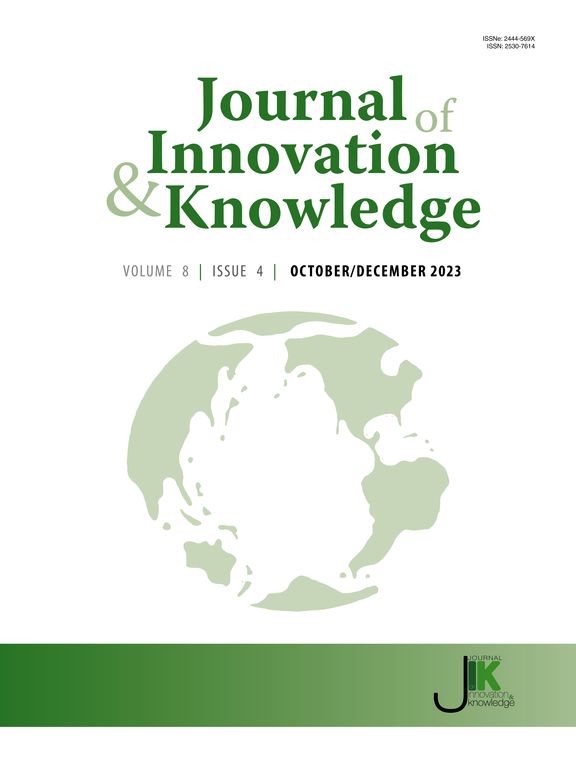解决人工智能-创造力悖论:教育创新和知识如何开启正和动态?
IF 15.5
1区 管理学
Q1 BUSINESS
引用次数: 0
摘要
人工智能(AI)在创意产业的快速发展带来了一个艰难的选择:虽然企业可以利用人工智能来加快工作速度,但这往往会降低人类的创造力和创新能力。我们展示了教育机构如何通过将不同的群体聚集在一起合作而不是相互竞争来解决这个问题。我们使用数学模型来研究四个关键群体是如何相互作用的:创意公司、政府监管机构、教育机构和创意专业人士。我们的模型追踪了20多个时期的这些互动,衡量了三个重要因素:创造性资源、群体之间的信任和技术进步。我们比较了教育扮演不同角色的情景,从被动的跟随者到主动的协调者。令人惊讶的是,我们发现,当教育机构在其他群体之间积极协调时,每个人都同时受益。我们的20期模拟显示,与追求纯自动化战略相比,采用教育中介战略的公司实现了139%的高利润(情景模拟上限)。这不是一场零和游戏,而是所有群体共同取得更好的成果。这是因为教育协调保护和加强了创造性资源,同时使可持续的技术一体化成为可能。因此,教育不仅仅是应对技术变革的成本。相反,它是一种战略工具,可以将竞争动态转化为协作创新。教育机构提供了长期视角、中立性和知识整合,以协调围绕可持续的人工智能创意伙伴关系的不同利益。然而,教育协调面临着深刻的局限性,包括结构性权力不对称,其中跨国公司拥有比个体艺术家更优越的资源,文化不兼容性使得西方框架在不同背景下不合适,以及资金挑战破坏了制度中立性。我们不是提供通用的解决方案,而是提供诊断工具,以便了解协调机制何时可行。与此同时,我们也承认,许多情况需要替代方法,或者可能会经历持续的效率-创造力张力,这是当代创意产业不可避免的特征。本文章由计算机程序翻译,如有差异,请以英文原文为准。
Tackling the AI-Creativity paradox: How educational innovation and knowledge unlocks positive-sum dynamics?
Artificial intelligence’s (AI) rapid growth in creative industries has created a difficult choice: While companies can use AI to work faster, this often reduces human creativity and innovation. We show how educational institutions can resolve this by bringing together different groups to work collaboratively rather than competing against each other. We use a mathematical model to study how four key groups interact: creative companies, government regulators, educational institutions, and creative professionals. Our model tracks these interactions over 20 time periods, measuring three important factors: creative resources, trust between groups, and technology advancement. We compare scenarios where education plays different roles, from being a passive follower to active coordinator. Surprisingly, we find that when educational institutions actively coordinate between the other groups, everyone simultaneously benefits. Our 20-period simulation reveals that compared to pursuing automation-only strategies, companies following education-mediated strategies achieved 139 % higher profits (scenario simulation ceiling). Instead of being a zero-sum game, all groups achieved better outcomes together. This is because that educational coordination preserves and enhances creative resources while enabling sustainable technology integration. Thus, education is not simply a cost that responds to technological change. Rather, it is a strategic tool that can transform competitive dynamics into collaborative innovation. Educational institutions provide the long-term perspective, neutrality, and knowledge integration needed to align different interests around sustainable AI-creativity partnerships. However, educational coordination faces profound limitations, including structural power asymmetries wherein multinational corporations possess superior resources compared to individual artists, cultural incompatibilities rendering Western frameworks inappropriate across diverse contexts, and funding challenges undermining institutional neutrality. Rather than providing universal solutions, we offer diagnostic tools for understanding when coordination mechanisms may be feasible. Meanwhile, we also acknowledge that many contexts require alternative approaches or may experience ongoing efficiency-creativity tension as an inevitable feature of contemporary creative industries.
求助全文
通过发布文献求助,成功后即可免费获取论文全文。
去求助
来源期刊

Journal of Innovation & Knowledge
Multiple-
CiteScore
16.10
自引率
12.70%
发文量
118
审稿时长
37 days
期刊介绍:
The Journal of Innovation and Knowledge (JIK) explores how innovation drives knowledge creation and vice versa, emphasizing that not all innovation leads to knowledge, but enduring innovation across diverse fields fosters theory and knowledge. JIK invites papers on innovations enhancing or generating knowledge, covering innovation processes, structures, outcomes, and behaviors at various levels. Articles in JIK examine knowledge-related changes promoting innovation for societal best practices.
JIK serves as a platform for high-quality studies undergoing double-blind peer review, ensuring global dissemination to scholars, practitioners, and policymakers who recognize innovation and knowledge as economic drivers. It publishes theoretical articles, empirical studies, case studies, reviews, and other content, addressing current trends and emerging topics in innovation and knowledge. The journal welcomes suggestions for special issues and encourages articles to showcase contextual differences and lessons for a broad audience.
In essence, JIK is an interdisciplinary journal dedicated to advancing theoretical and practical innovations and knowledge across multiple fields, including Economics, Business and Management, Engineering, Science, and Education.
 求助内容:
求助内容: 应助结果提醒方式:
应助结果提醒方式:


